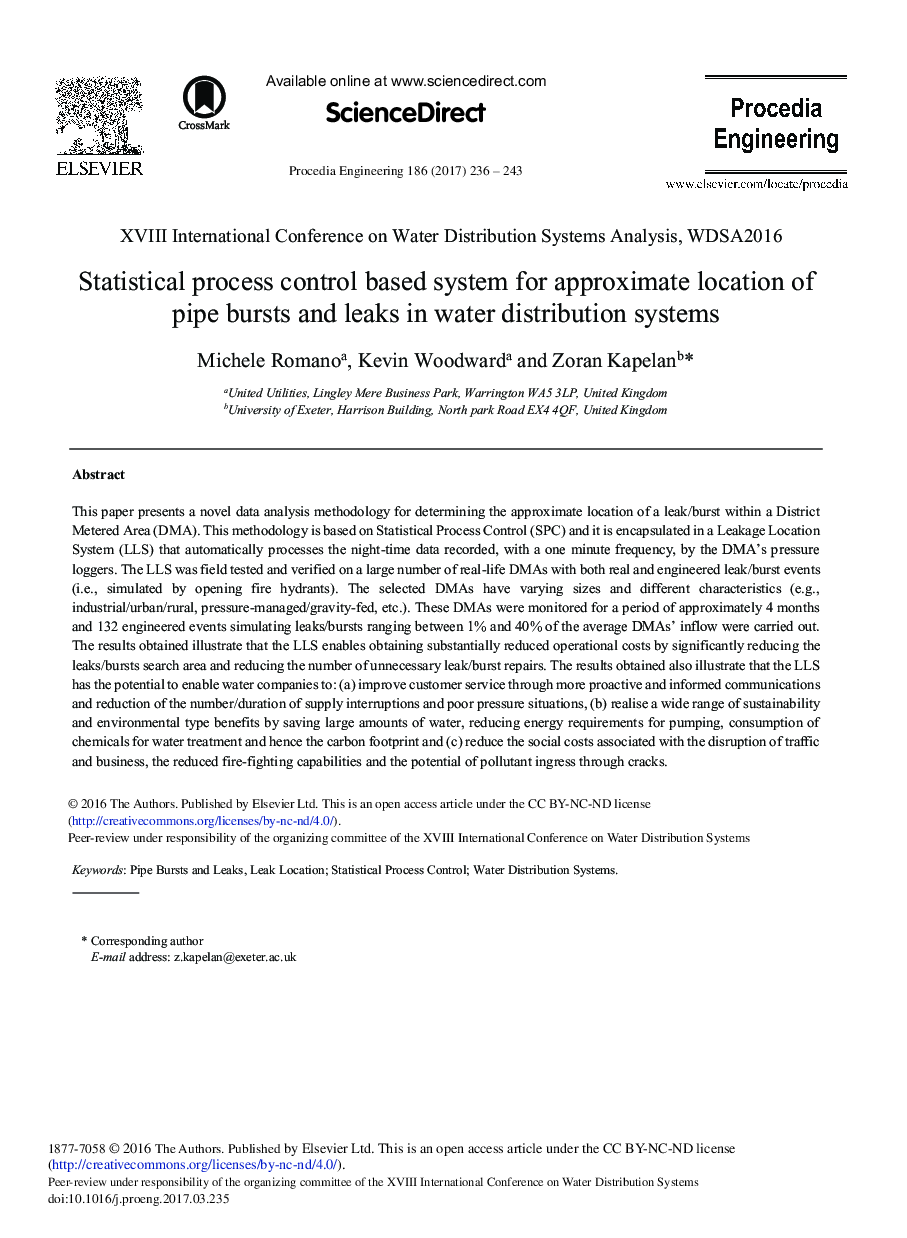| کد مقاله | کد نشریه | سال انتشار | مقاله انگلیسی | نسخه تمام متن |
|---|---|---|---|---|
| 5028213 | 1470640 | 2017 | 8 صفحه PDF | دانلود رایگان |
This paper presents a novel data analysis methodology for determining the approximate location of a leak/burst within a District Metered Area (DMA). This methodology is based on Statistical Process Control (SPC) and it is encapsulated in a Leakage Location System (LLS) that automatically processes the night-time data recorded, with a one minute frequency, by the DMA's pressure loggers. The LLS was field tested and verified on a large number of real-life DMAs with both real and engineered leak/burst events (i.e., simulated by opening fire hydrants). The selected DMAs have varying sizes and different characteristics (e.g., industrial/urban/rural, pressure-managed/gravity-fed, etc.). These DMAs were monitored for a period of approximately 4 months and 132 engineered events simulating leaks/bursts ranging between 1% and 40% of the average DMAs' inflow were carried out. The results obtained illustrate that the LLS enables obtaining substantially reduced operational costs by significantly reducing the leaks/bursts search area and reducing the number of unnecessary leak/burst repairs. The results obtained also illustrate that the LLS has the potential to enable water companies to: (a) improve customer service through more proactive and informed communications and reduction of the number/duration of supply interruptions and poor pressure situations, (b) realise a wide range of sustainability and environmental type benefits by saving large amounts of water, reducing energy requirements for pumping, consumption of chemicals for water treatment and hence the carbon footprint and (c) reduce the social costs associated with the disruption of traffic and business, the reduced fire-fighting capabilities and the potential of pollutant ingress through cracks.
Journal: Procedia Engineering - Volume 186, 2017, Pages 236-243
